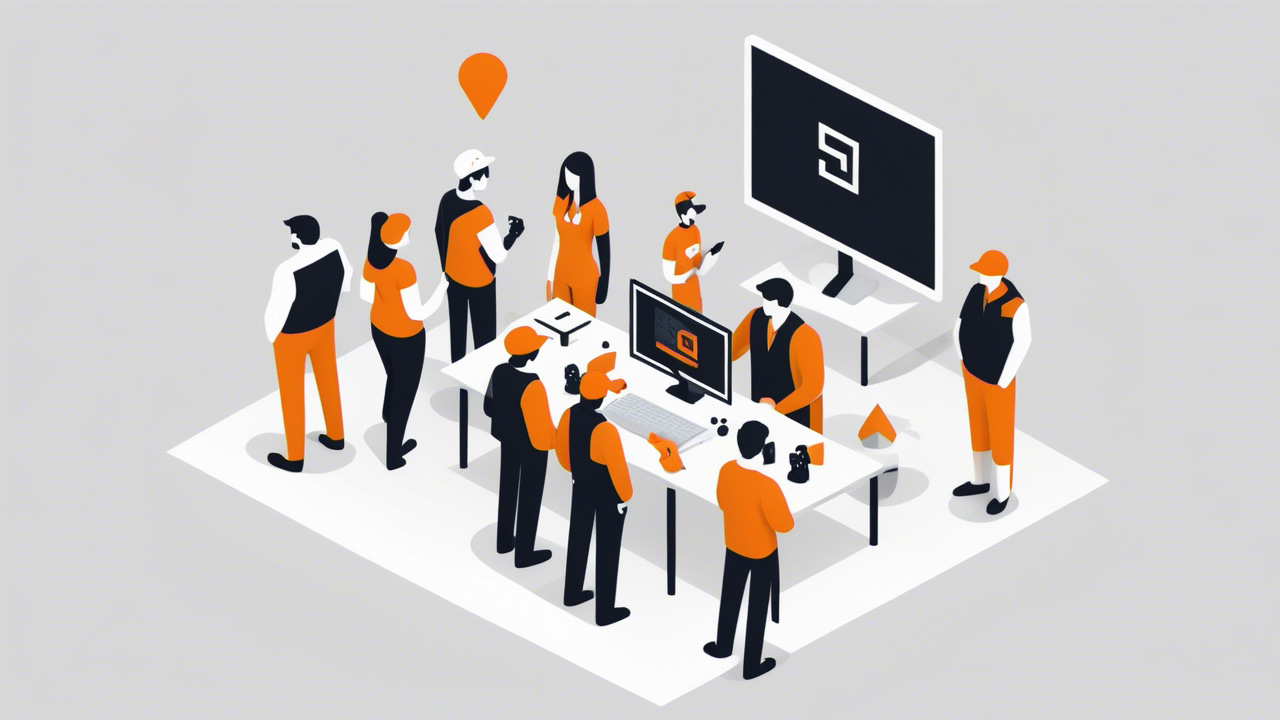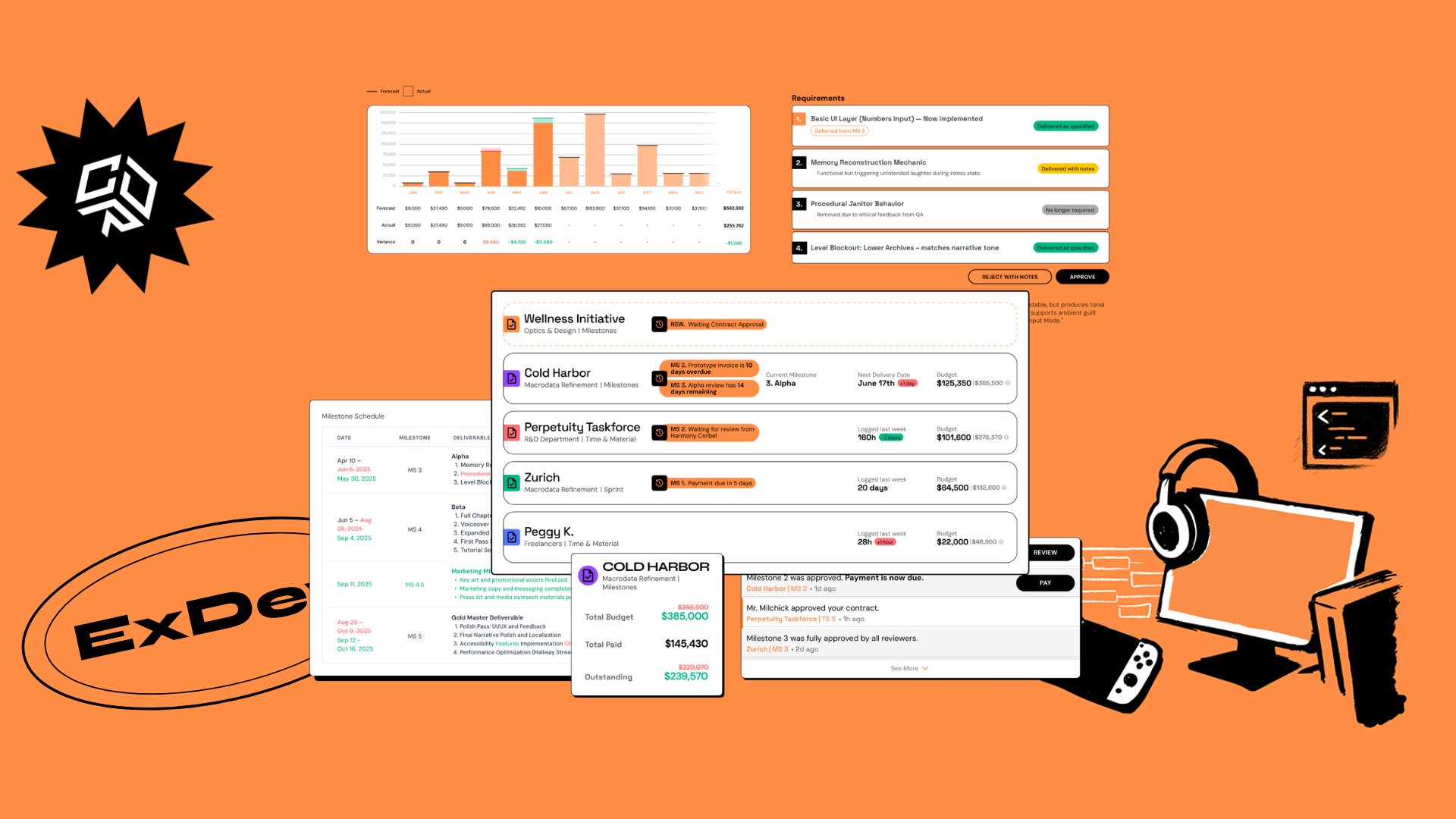Like many of you, I learned about external development partnerships the hard way.
Early in my career, whenever I needed a development partner, my strategy was simple: ask around. "Who do you know that's good?" It seemed like the most logical starting point. After all, personal referrals felt safe and familiar.
Sometimes this approach worked, but more often than not, it led to partnerships that struggled or even failed entirely. At first, I blamed the studios. Maybe they weren’t as skilled as I’d thought. But over time, I began to see a different pattern. The issue wasn’t the studios—it was me. My approach to both finding and working with external partners was fundamentally flawed
For years, I struggled with the inefficiencies and frustrations of external development, learning hard lessons that many studios face when navigating this space. Time and again, I saw incredible potential wasted due to mismatched partners, unclear expectations, and inadequate or absent process. These challenges inspired me to create CDR—not just to match studios with the best partners but to ensure partnerships are built on solid foundations, set up for long-term success, and deliver real value.
Here's how we turned those hard lessons into a better way forward.
The Learning Curve Nobody Should Have to Climb
During my time at startups, I spent countless hours (and dollars) learning "how to do ExDev." Part of that involved building vendor lists, establishing evaluation processes, experimenting with different partnership frameworks, and so on. But it didn’t take too many failed projects and international flights for me to wonder how many hours were wasted across all studios who have gone through this same expensive, time-consuming learning curve just to get quality results from their external teams.
At the same time, I could see the light. I had a few partners who were flat out incredible. They consistently over-delivered, bringing fresh perspectives and valuable expertise to our team. It was a total paradigm shift: having them in our Slack simply allowed us to do so much more than we could ever hope to do ourselves.
So then, why is it so hard to build these partnerships?
Looking around the industry, I quickly realized that many (most?) legacy studios have already figured this out. Check out any AAA outfit and you’ll see them: Outsourcing Supervisors, External Development Managers, Creative Services Directors. Publishers have gone even further and created entire central service divisions dedicated to ExDev.
These companies are no longer asking themselves whether or not they should do external development–the value is obvious. They’re asking themselves how they can get better at external development.
Lessons from Larger Studios
Today, more than a third of game budgets are allocated to services, a share that continues to grow.1 AAAs in particular invest an incredible amount in getting better at ExDev itself: more sourcing, better evaluation, better tooling, better process.
Meanwhile, independent studios are left to figure it all out on their own, usually through expensive trial and error. What’s more, many have been burned so bad they learn the absolute wrong lesson–the dreaded "Let’s do it all in-house!"2
At GDC this year, I was surprised to hear several founders who had explicit plans to hire full game teams in California. Each had a similar story: one of their co-founders had bad experiences working with external teams in the past, so they were going to avoid that "mistake" altogether.
As someone who has seen firsthand how incredibly valuable external teams can be, I can't help but feel these studios are going to get left behind.
Observations like this are what led me to start CDR. Not to push studios toward more external development, but to share what I've learned about building successful partnerships so everyone, not just AAAs, can get the most out of these partnerships. After all, when you do decide to work with external partners, that decision should help your studio thrive, not create new obstacles to overcome.
Beyond just matchmaking
A big part of CDR is the database of service providers we've built3, which is brought to life by the methods we use to source and evaluate providers, and match them with development teams. It draws from all of my experience doing this for years, from analyzing project portfolios, to soliciting proposals, to interviewing teams.
But even if you find the right partner, there are still countless potential pitfalls which can throw a partnership into jeopardy. Ask anyone who carries one of those ExDev job titles I listed above who is responsible for more partnership failures: buyers or providers. Drinks on me if you can find someone who claims the latter.4
Following through
Successful partnerships thrive on shared responsibility. That’s why CDR is designed to be more than just a headhunter for service providers. And like any good game designer, I intentionally structured CDR's incentives to align with our clients’ success: we only get paid when the partnership succeeds.
Which means CDR doesn’t disappear after a partner gets signed. We stay engaged, ensuring the flowery vision pitched in that first sales meeting gets translated into clear requirements and most importantly, real results.
AAA studios have long understood the value of having a dedicated person focused on keeping partnerships on track, separate from the day-to-day project management. It’s a proven approach. And since every lesson worth learning you need to learn twice, I had to relearn this with CDR. Many of CDR’s earliest clients like me believed that all that mattered was getting a “good” partner and didn’t care for oversight. Even with great partners, success requires intentional, ongoing collaboration to overcome potential pitfalls.
In your corner
In the end, CDR’s goal is to make all companies–not just those with access to a well-funded ExDev department–competitive in today’s games industry. From the first question you ask when initially considering external partnerships to final delivery, we provide world class service and infrastructure for any company to plan and execute an effective external development strategy.
After all, like all aspects of game development, external needs evolve over time. Sometimes you require short term expertise for a specific feature, other times you're looking to scale certain areas. Once of the biggest advantages of working externally is flexibility; to find the exact resources you need when you need them.
For most studios, this flexibility comes at a cost. We all know how important good planning is to any project, but how hard is it to find time to source and onboard a new partner when you’re in full blown production?
CDR gives studios the capability to onboard and offboard vendors whenever they need, all while maintaining the rigorous processes typically only found at major studios with dedicated ExDev departments. Letting you focus on the most important aspects of your business: your game.
Looking Forward
CDR turned one year old on Dec 12, 2024. During that time we've built out a huge database of providers, continuously improved our methodologies for matching teams with the right partners, and built dashboards to keep clients informed on schedule, budget and outcomes. It’s proof-positive that ExDev can be done right at any scale, without causing smaller teams all sorts of problems.
The games industry continues to evolve, and with it, the complexity of external development partnerships. Whether you're leading a team of 100 or working as a solo indie dev, successful partnerships still come down to the same thing: finding partners who have solved problems like yours, who share your values around communication, and who have highly relevant experience delivering exactly what you're trying to achieve.
That's why CDR exists–to help you navigate these choices with confidence, backed by real industry expertise and a commitment to transparency. Because in the end, it’s all about delivering the results that drive your success.
Have thoughts about external development partnerships? Want to learn more about how CDR can help your studio build better partnerships? Let's talk.
1 I found the numbers here a few months ago in the Keywords FY 2023 results: https://www.linkedin.com/posts/brookevandusen_ive-been-looking-for-an-approximate-market-activity-7207030406242607105-7SdA/
2 To be clear, I don't think a preference towards hiring internally is bad. But I wouldn't recommend anyone turn their back on the games services market as a whole, not if they aim to build a competitive studio.
3 I talked about our database recently as we crossed the 1,500 providers milestone: https://www.linkedin.com/posts/brookevandusen_why-i-had-to-build-the-game-industrys-biggest-activity-7267586571967619073-rfNR
4 In reality, most ExDev operations would claim that ~90% of partnership problems come from buyers, not providers. I opted to put this in the footnote because 1) I don't think most people will believe me, and 2) Like everyone else who is in a position to make this claim: buyers pay my salary :)





